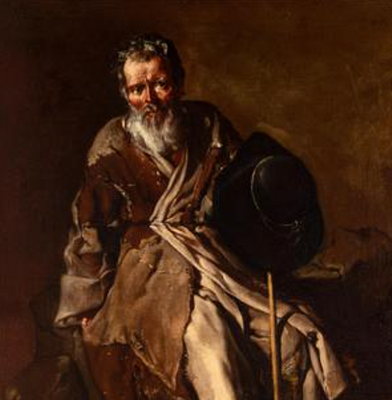Valladolid relief from the 16th century. "Doctor of the Church". Alabaster. 19th century frame.
Lot 3
About Seller
Setdart Auction House
Carrer Aragó 346
Barcelona
Spain
Setdart Subastas was born in 2004 and is currently the first online art auction in Spain with solidity, prestige and reliability guaranteed by our more than 60,000 users. Setdart has a young, dynamic and enterprising team ready to successfully manage the purchase and sale of art works through custom...Read more
Categories
Estimate:
EUR€1,400 - EUR€1,700
$1,505.38 - $1,827.96
Absentee vs Live bid
Two ways to bid:
- Leave a max absentee bid and the platform will bid on your behalf up to your maximum bid during the live auction.
- Bid live during the auction and your bids will be submitted real-time to the auctioneer.
Bid Increments
| Price | Bid Increment |
|---|---|
| EUR€0 | EUR€10 |
| EUR€200 | EUR€25 |
| EUR€500 | EUR€50 |
| EUR€1,000 | EUR€100 |
| EUR€3,000 | EUR€200 |
| EUR€5,000 | EUR€500 |
| EUR€10,000 | EUR€1,000 |
| EUR€20,000 | EUR€2,000 |
| EUR€50,000 | EUR€5,000 |
About Auction
By Setdart Auction House
Jun 1, 2021
Set Reminder
2021-06-01 09:45:00
2021-06-01 09:45:00
America/New_York
Bidsquare
Bidsquare : OLD MASTERS & SCULPTURE - Day 2
https://www.bidsquare.com/auctions/setdart-auction-house/old-masters-sculpture---day-2-6999
Setdart Auction House sofia@setdart.com
Setdart Auction House sofia@setdart.com
- Lot Description
Valladolid relief from the 16th century. "Doctor of the Church". Alabaster. 19th century frame. Measurements: 12 x 9.5 cm; 22.5 x 19.5 cm (frame). Relief carved in alabaster on several planes, with the figure of one of the Doctors of the Church in high relief and the rest of the elements with a somewhat lower level, which is reduced in depth, according to the Italian technique of "schiacciato". The artist contextualizes the scene in a Renaissance interior whose depth is accentuated by the arrangement of the tiles that make up the floor. The lyre-legged sofa, the bargueño with the lid uncovered or the pilasters in the last instance denote the Italianate knowledge of the artist who, due to the stylistic characteristics he defends, could belong to the focus of Valladolid. The schiacciato is a system of modeling in sculptural relief used by the Romans and perfected in the fifteenth century by Donatello, which consists of proportionally reducing the bulk of the relief according to the depth to be represented. This sculptural technique makes it possible to create a bas-relief with a minimal variation (sometimes referred to as millimeters) with respect to the background. To give the viewer the illusion of depth, the gradual decrease in the depth of the thickness is complemented by the rigorous application of the laws of perspective, which enhances the visual effect. From the artistic point of view, 16th century Spain underwent a process of transformation towards the new art of humanism implanted in Italy, much slower due to the need to learn the new techniques and, of course, to change the taste of the clientele. Sculpture reflects, perhaps better than other artistic fields, this eagerness to return to the classical Greco-Roman world. Anatomy, the movement of the figures, compositions with a sense of perspective and balance, the naturalistic play of the folds, the classical attitudes of the figures soon began to be valued; but the strong Gothic tradition maintains the expressiveness as a vehicle of the deep spiritualist sense that informs our best Renaissance sculptures. This strong and healthy tradition favors the continuity of religious sculpture in gilded and polychrome wood, which accepts the formal beauty offered by Italian Renaissance art. In the first years of the century, Italian works arrived in our lands and some of our sculptors went to Italy, where they learned first hand the new norms in the most progressive centers of Italian art, whether in Florence or Rome, and even in Naples. Upon their return, the best of them, such as Alonso Berruguete, Diego de Siloé and Bartolomé Ordóñez, revolutionized Spanish sculpture, even advancing the new mannerist, intellectualized and abstract derivation of the Italian Cinquecento, almost at the same time as it was produced in Italy.
- Shipping Info
-
In-house shipping available. Please inquire at admin@setdart.com.
-
- Buyer's Premium



 EUR
EUR CAD
CAD AUD
AUD GBP
GBP MXN
MXN HKD
HKD CNY
CNY MYR
MYR SEK
SEK SGD
SGD CHF
CHF THB
THB














